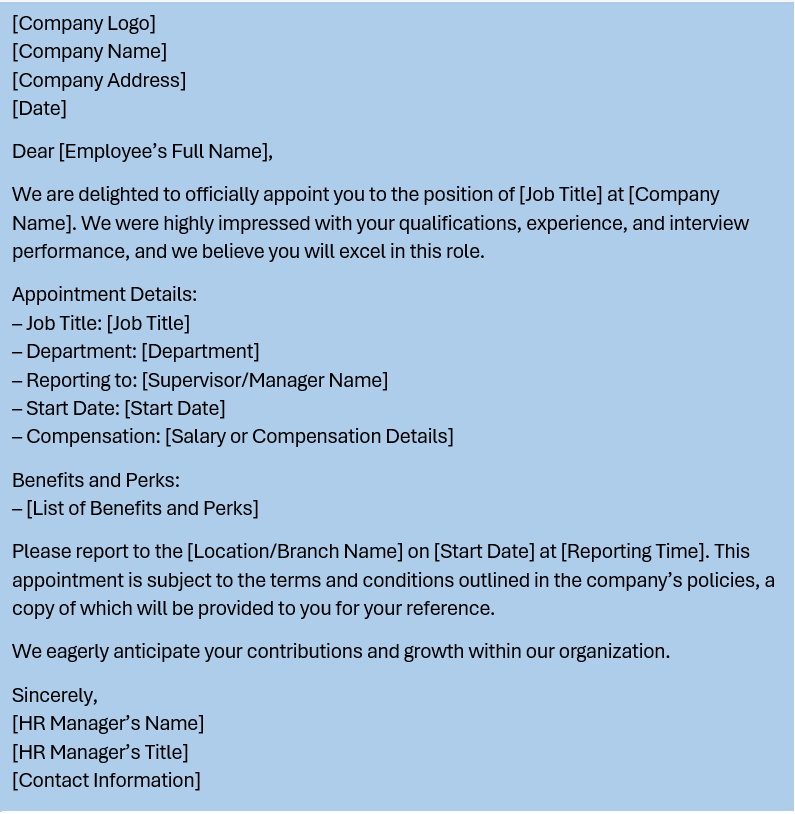An appointment letter, also known as a joining letter, serves as a formal document issued by an employer to an aspiring candidate who has successfully secured a job position. It includes key points like job name, pay info, working hours and reporting structure in the company. This important talk sets out the rules of work. The offer letter format in Word has important parts such as the work title and department, joining date, and hours you will work. This helps each person involved to know all the details clearly.
The offer letter makes clear certain rules and terms. These include special benefits, extra privileges, and company guidelines that employees should follow. The acceptance part in the hiring paper plan helps a new worker say yes for real to all conditions written down. This makes it easy and clear to join the company. A good hiring letter, which also acts as a joining letter, is like a clear plan. It helps build good and helpful worker-manager relations right from when the job starts.
Essential Elements in an Appointment Letter
A job offer letter is the main paper that starts the work connection between a boss and someone they want to hire. In this important message, a few main parts are carefully added so everyone understands and agrees. Let’s take a look at the main parts that make up a complete job offer letter.
- Job Title and Department: Clearly telling the worker’s job and department in the company helps them understand their part very well.
- Compensation Details: The job offer should clearly explain the agreed-upon salary, including things like allowances, bonuses or other ways of getting money. This part makes sure everyone understands each other and keeps expectations in check.
- Joining Date and Work Hours: Setting the official beginning date and planned working hours creates a basis for bringing the employee into the company. This understanding is important for both sides to team up smoothly.
- Reporting Structure: Knowing the boss or manager shows who is in charge. It helps see where an employee stands in their workplace hierarchy.
- 5. Terms and Conditions: Adding any special rules for the job, like a trial period, keeping secrets or extra-legal promises makes sure both sides know what is expected.
- Benefits and Perks: A complete job offer letter usually explains the worker benefits package. It covers things like health insurance, plans to save money for retirement and more nice gifts. This information helps to give a complete picture of the job offer.
- Company Policies: Looking at the company’s rules and how it works helps the worker know what to follow. This makes a happy place where everyone is good with these rules.
- Acceptance Section: Giving a special area for the worker to say “Yes” to what’s in the letter makes them more sure about their job.In simple words, an appointment letter with its complete details helps build clear and helpful boss-worker relations. Each part is important for setting rules, getting trust and making it easy to join the organization.
Example appointment letter format:

Time Champ helps HR managers easily measure how well employees are doing their jobs, making it simpler to support everyone to work better together and help the company grow.
FAQs
An appointment letter is a formal document issued by an employer to a candidate confirming their selection for a position. It typically outlines the job role, start date, compensation details, work policies, and other terms of employment.
An offer letter is presented to a candidate to outline the terms of employment and confirm a job offer, often subject to certain conditions like background checks. An appointment letter is sent once those conditions are met, formally confirming the employment start.
A joining letter format typically includes the candidate’s acknowledgment of the offer, confirmation of the start date, acceptance of the job terms, and an expression of gratitude for the opportunity.

